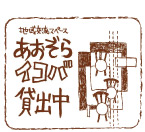Tyhpoon/Flood Damage
Any history of the Nishiyodogawa area would be incomplete without relating flood and weather damage. Especially indicative of this would be the prewar Muroto Typhoon, and the postwar Typhoon Jane and Second Muroto Typhoon. Ground subsidence caused in industrialization made flood and weather damage even worse. The Sotojima Leprosy Sanatorium records the struggles of people to become human again. After it was destroyed by the Muroto Typhoon, the facility relocated to Nagashima in Hiroshima Prefecture.
Improvement of coastal area that was inundated because of ground subsidence (1961)
Note: The photo is from a collection published by the Executive Committee on the 70th Anniversary of Nishiyodogawa’s Ward Status.
Principal Natural Disasters Since 1868
| May 14, 1868 | Kajima Village, Mitejima Village, Fuku Village, Owada Village, Tsukuda Village; river bank collapses at Yagura Shinden, Hiejima, Kamata Shinden, and Hyakushima Shinden |
| Jul 14, 1868 | Bank of former Yodo River collapses |
| May 18, 1871 | Dikes break at river mouths of Aji R. and Nakatsu R.; flooding of Yagura Shinden and Nunoya Shinden |
| Jun 1885 | Severe flooding on left bank of former Yodo River, “Hirakata Break” |
| Aug 13, 1889 | Flooding of former Yodo River |
| Aug 16, 1891 | Storm surge; dikes along newly developed rice paddies break |
| Jul 21, 1896 | Flooding of Kanzaki R. and Yodo R.; damage at Hiejima, Chibune, and Utagawa villages |
| Sep 8, 1896 | Flooding of Kanzaki R.; inundation of Mitejima, Utajima, Kajima, Hiejima, etc. |
| Jul 9, 1903 | Kanzaki R. overflows banks; dike at Kajima breaks |
| Oct 10, 1917 | Heavy flooding of Yodo R.; “Otsuka Break”; flooding across vast areas of Nishinari County |
| Sep 21, 1931 | Muroto Typhoon, flooding throughout ward |
| Sep 3, 1950 | Typhoon Jane, flooding throughout ward |
| Sep 25, 1953 | Typhoon no. 13 |
| Sep 16, 1961 | Second Muroto Typhoon, flood waters above floor level in Owada, Dekijima, Mitejima, etc. |
Source: History of Nishiyodogawa Ward, 1996
Testimony: Medical Care at the Time of Typhoon Jane
September 3. Typhoon Jane assaulted the Osaka Plain at the
first light of dawn… After dawn had fully broken, I went outside and
was shocked by the sight. Power poles were listing, power lines were broken
and hanging limply, the area was littered with broken glass and roof tiles,
signboards and tin roofing had fallen, cruelly broken, all over the place…”Looks like the dike broke, and the storm surge rushed
into the area. The view from the second floor was flooding as far as one
could see, with the water up to chest level…””Doctor! It’s just terrible. Apparently there are a lot
of injured people among those who fled to the elementary school for safety…””Well, then. I’ll send you there on a raft.”…We quickly tied together three large oil drums and
made a raft of them by putting old boards on top. A wash basin served as
my seat, and in no time we had a raft that allowed me to get around… When I reached a home, someone let down a rope from a
second-floor window. I hung my shoes from my neck and grabbed onto the
rope with all my strength. From above, members of the injured person’s
family pulled, and from below Mr. Yamaguchi and other young people pushed.
The raft rocked and Mr. Yamaguchi plunged into the muddy water… Finally
our efforts brought me to the top, where I hooked my foot over the second-floor
eves and climbed up. Members of the injured person’s family were so happy
they cried.
From Takeko’s Memoirs of Youth: Love of Life, by
Takeko Kutsunugi, published by Seifudo, 1982.
Urbanization
<<<<War Prosperity & Industrialization | <<War Damage to Nishiyodogawa | Tyhpoon/Flood Damage(Here)








